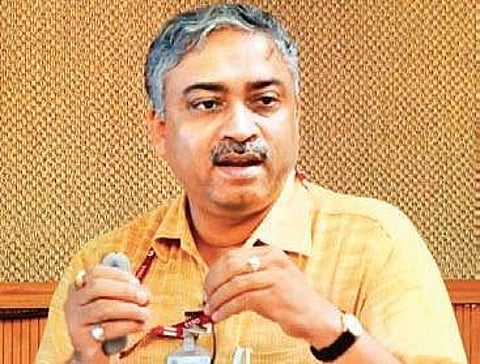

HYDERABAD: Instead of conducting token events to commemorate World Water Day (March 22), the Central and state governments would do well to take a serious look at a solution to groundwater depletion offered by the Hyderabad-based National Geophysical Research Institute (NGRI).
In just three years, the institute helped raise groundwater levels by 215 ft in three villages at Choutuppal in Yadadri district. Between 2014 and 2017, the Center for Economic and Social Studies (CESS) found that the average groundwater-level depth in these regions shot up from 300 ft to 85 ft.
Only a scientific approach would help provide a long-term solution for water conservation, NGRI director VM Tiwari told The New Indian Express in an exclusive interview. “More than 70 per cent of water needs are still being met by groundwater. In the coming years, the requirement is bound to increase,” he said.
For long, rainwater harvesting pits and percolation tanks have been built to raise groundwater levels. But are they really all that effective? Tiwari points out that two-thirds of the country’s terrain, including the Telangana region, is hard rock, and even if pits or percolation tanks are constructed, there is no guarantee rainwater will percolate down to the groundwater aquifer.
This is why it is imperative that the Earth is studied well, in a process known as sub-surface mapping, to learn where water from the surface percolates into the ground and reaches aquifers, he explained, adding that this technique was used to raise the groundwater level in Choutuppal.
“It does not take a great deal of investment. There are many engineers in every state, and each state has its own groundwater board. They can be trained in sub-surface mapping, and all areas can be mapped to find where construction of percolation tanks would be effective... We have already trained some youth, but our reach and capacity are limited,” Tiwari said. Sub-surface mapping, meanwhile, is just one of the important steps towards groundwater conservation. A whole lot of other data needs to be collected and regularly updated, to have a comprehensive information-based scientific approach towards water conservation, the NGRI director added.
“It’s not about non-availability of potable water. Groundwater contamination needs to be controlled at all places because the aquifers can be connected, so pollution from one place can affect water quality somewhere else... “There also needs to be data on the climatic impact on water resources at the local level, which is not available.”